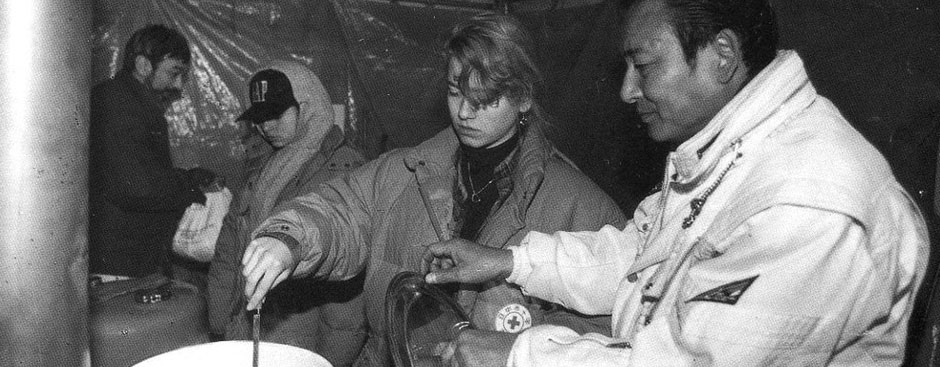1923
The Great Kanto Earthquake of 1923 exemplified Japan's domestic debates, national beliefs and its interaction with foreigners. Locally, civilian and military leaders quickly responded to the opportunity to rebuild the city in a modern manner. Some conservative government leaders pointed towards the earthquake as a divine punishment. There was also a national prejudice against Koreans in Japan. Rumors spread that Koreans were taking advantage of the earthquake by stealing and poisoning wells, leading to a massacre and arrests. The blatant rejection of outsiders was not limited to foreigners within Japan's boundaries. Despite difficulties in communication after the earthquake, many countries sent relief efforts to Japan. Unexpectedly, international aids were criticized in Japan as a "[humiliation of] the Japanese" and an "end to the era of good feeling" (Hammer, 2011). Much of Japan's imperial nationalism was contingent on its independence from outsiders.
1945
After the Atomic Bombings, film became a medium of local and global dialogues. In Godzilla (1954), a Japanese scientist saves his nation from destruction by a nuclear monster. Despite its strong references to the Pacific War, the Atomic Bombings, and the US Occupation, the film was an international hit. Its universal appeal resulted from the combination of Japanese cultural traditions with Western cinematic style, and the victimization of Japan. Hiroshima Mon Amour (1959) addresses the Atomic Bombing of Hiroshima as a global issue, depicting its emotional impact on a Japanese man and a French woman, and revealing that traumatic experience is independent of national borders.
The destruction had a profound impact on Japan's identity and tradition. As a defeated nation for the first time in its history, Japan's strength was shaken and visions for reconstruction were rare (Hein, 2003, p.4). Japan's rebuilding efforts using the country's traditional urban planning techniques (notably land readjustment) saw limited change as a result of the US Occupation.
1995
Despite obstacles in reaching Kobe after the earthquake, foreign aid was immediately sent to Japan. Organizations like Americares sent flu vaccine and Tylenol to fill warehouses. Many nations sent doctors, cellphones, and search dogs. Yet again what greeted them was a polite refusal. Meanwhile, domestic responses first ignored the severity of the disaster and responses were slow due to the nemawashi (multi-layered consensus) government system (Kristof, 1995). With precious resources and time passing by, residents stuck in emergency shelters were furious. Eventually, national media joined the protest.
The case of the 1995 Kobe Earthquake revealed national actors as barriers between global aids and local needs, in contrast to wartime when local rebuilding efforts embraced global networks both voluntarily and under pressure.
2011
With approximately 744 nationally registered cultural artifacts damaged, Japan's extensive conservation effort after the 3.11 triple disaster was significant both to the country and the global community. Despite the decline of Japanese conservation techniques and offers from conservators worldwide, Japan has once again accepted only domestic help to maximize efficiency through minimizing language and cultural barriers. After March 2011, many literary works like the short story collection March was Made of Yarn (2012) represent global and local reactions to the disasters. Tawada's "The Island of Eternal Life" expresses fears about Japan's future international image, whereas Ikezawa's "Grandma's Bible" reflects the internal views of the Japanese. People from radiation-contaminated areas experience social discrimination, while Japan as a whole raised panic among other nations who feared the spread of nuclear radiation. Only through education and communication can these issues be resolved.
